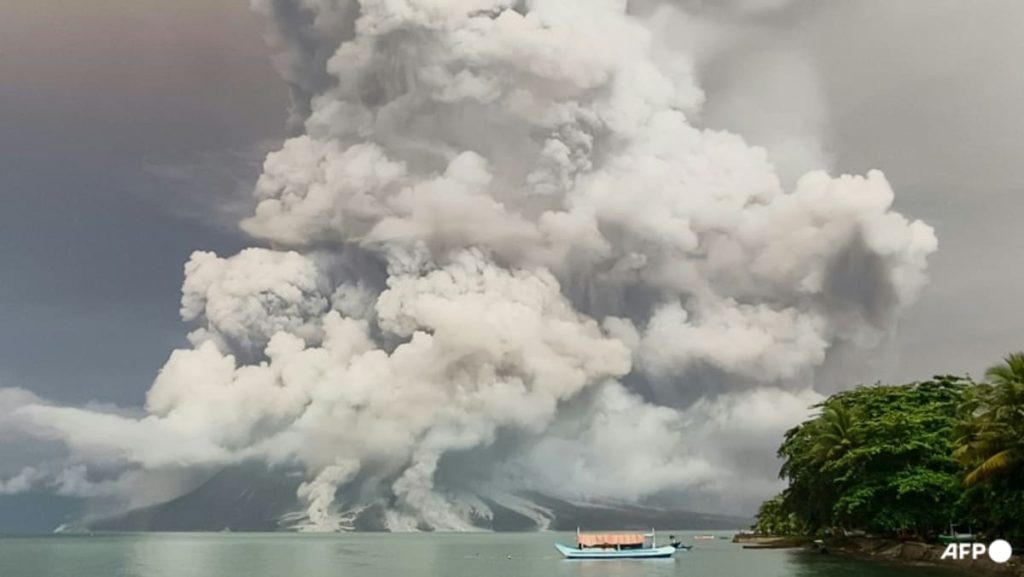acuate the area. The volcano, located on the island of Sangihe in North Sulawesi province, exploded multiple times, sending ash and smoke as high as 3,000 meters into the air. The eruption also triggered small landslides in the surrounding area, prompting concerns about potential further eruptions and their impact on nearby communities. Authorities have set up evacuation centers and are working to ensure the safety of those affected by the eruption.
The sudden eruption of Mount Ruang caught local residents and authorities by surprise, as the volcano had shown no signs of increased activity in recent weeks. The unexpected nature of the eruption underscored the unpredictable and dangerous nature of volcanic activity, which can pose significant risks to nearby populations. In response to the eruption, authorities have declared a 3-kilometer exclusion zone around the volcano and are closely monitoring its activity to assess the potential for further eruptions.
The eruption of Mount Ruang has disrupted daily life for local residents, many of whom rely on the surrounding area for farming and other livelihoods. The ash and smoke from the eruption have covered nearby villages, making it difficult for residents to go about their daily activities. In addition to the immediate impact of the eruption, there are concerns about the long-term effects on the local environment, agriculture, and economy. Authorities are working to provide support to those affected by the eruption and to assess the extent of the damage caused by the volcanic activity.
The eruption of Mount Ruang has also raised concerns about the broader implications of volcanic activity in Indonesia, which is home to more than 130 active volcanoes. The country is located on the Pacific Ring of Fire, a volatile region known for its frequent earthquakes and volcanic eruptions. The eruption of Mount Ruang serves as a reminder of the need for vigilance and preparedness in the face of natural disasters, and the importance of early warning systems and evacuation plans to protect lives and property. Authorities are working to strengthen their monitoring and response capabilities to better manage the risks posed by volcanic activity in the region.
The eruption of Mount Ruang has also prompted calls for increased international cooperation and support in responding to natural disasters in Indonesia. The country has faced a number of devastating disasters in recent years, including earthquakes, tsunamis, and volcanic eruptions, which have caused significant loss of life and destruction. International assistance and collaboration can play a key role in providing resources, expertise, and support to help mitigate the impact of these disasters and assist affected communities in their recovery efforts. By working together, countries can better prepare for and respond to natural disasters, and build more resilient communities in the face of future crises.
In conclusion, the eruption of Mount Ruang in Indonesia serves as a stark reminder of the unpredictable and destructive power of volcanic activity, and the importance of being prepared for natural disasters. The eruption has forced thousands of people to evacuate their homes, disrupted daily life for local residents, and raised concerns about the broader implications of volcanic activity in the region. As authorities work to assess the extent of the damage caused by the eruption and provide support to those affected, it is clear that a coordinated and proactive approach to disaster preparedness and response is essential to protecting lives and property in the face of natural disasters. By working together and leveraging international cooperation and support, countries can better prepare for and respond to the challenges posed by natural disasters, and build more resilient communities in their wake.


